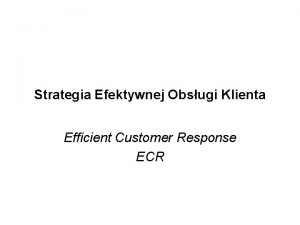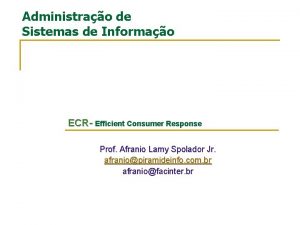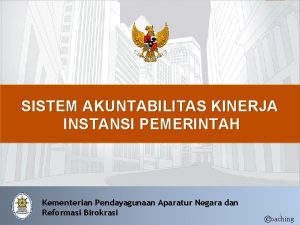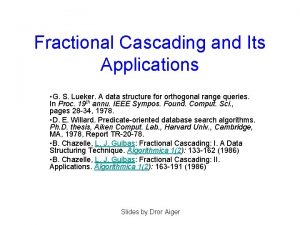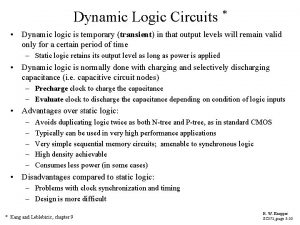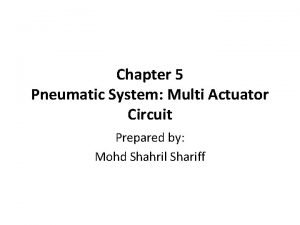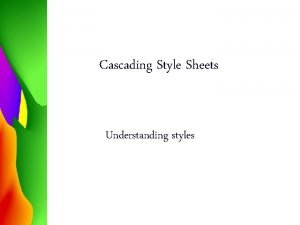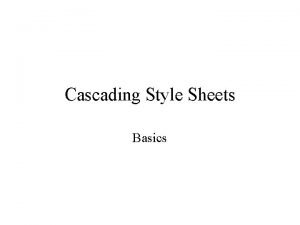Modelling of cascading effects and efficient response to
















- Slides: 16

Modelling of cascading effects and efficient response to disaster spreading in complex networks K. Peters, L. Buzna, and D. Helbing, 2008 Alexandre Mérillat Nhat Anh Truong | 10/3/2020 | 1

Blackout of August 14, 2003 ((Vorname Nachname)) | 10/3/2020 | 2

Introduction § We are surrounded by networks: infrastructure, organisations, communication systems § To model complex systems: § System components = nodes § Relation between components = links (physical but also logical) § Understanding dynamics of failure spreading in complex networks: § Topology of underlying network § Dynamic mechanisms of interaction Alexandre Mérillat Nath Anh Truong | 10/3/2020 | 3

Modelling the dynamics of disaster spreading

Network and node model (1) § Use a generic model: equation for behaviour of one system component that depends on internal & external loads § Sigmoid function of expected damage (specific fragility curve) § θi : threshold (node fails if sum of all disturbances approach θi) Alexandre Mérillat Nath Anh Truong | 10/3/2020 | 5

Network and node model (2) § We add interactions between components and the recovery ability of the component which tend to restore xi to zero. § Overal dynamic of node in an interaction network (with permanent recovery capabilities: Alexandre Mérillat Nath Anh Truong | 10/3/2020 | 6

Dynamics of disaster spreading (1) § One initial extreme event § Three basic types of system behaviours are found: § 1. self-healing scenario: damage grow and spread as long as disturbance persist, then go back § 2. spreading scenario: damage grow even after disturbance ceased § 3. intermediate regime Which regime depends on recovery rate Alexandre Mérillat Nath Anh Truong | 10/3/2020 | 7

Dynamics of disaster spreading (2) 1/τ decreases Repair effect reduced Alexandre Mérillat Nath Anh Truong | 10/3/2020 | 8

Dynamics of disaster spreading (3) Fast propag. Nonlinear dep. Slower propag heterogeneous Alexandre Mérillat Nath Anh Truong | 10/3/2020 | 9

Assessment of disaster management strategies

The strategies 1. Uniform distribution of available forces 2. Out-degree based assignment of forces 3. Uniform assignment to damaged nodes 4. Uniform assignment to destroyed nodes 5. Targeted assignment to highly connected nodes 6. Out-degree-based targeted assignment to destroyed nodes Alexandre Mérillat Nath Anh Truong | 10/3/2020 | 11

Modelling of resources allocation and damage mitigation § Alexandre Mérillat Nath Anh Truong | 10/3/2020 | 12

Efficiency of strategies (1) Number of destroyed nodes for different strategies : solid line – strategy S 3; long-dashed line – S 4; short-dashed line – S 5; dotted line – S 6 Alexandre Mérillat Nath Anh Truong | 10/3/2020 | 13

Efficiency of strategies (2) Damages for two differences, an efficient (S 6) and an inefficient one (S 1), as a function of ressources R available and time delay for response t. D Alexandre Mérillat Nath Anh Truong | 10/3/2020 | 14

Conclusion § For real cases where resources are limited and reaction is within a time delay, choosing the strategy wisely can greatly improve the efficiency of the response. However, the good use of the strategy might be limited by a lack of information. § This model can help to optimise the robustness of existing networks and better prepare our response to disasters. Alexandre Mérillat Nath Anh Truong | 10/3/2020 | 15

Questions ? Thank you for your attention !
 What is the cascading effect
What is the cascading effect Productively efficient vs allocatively efficient
Productively efficient vs allocatively efficient Allocative efficiency
Allocative efficiency C b a d
C b a d Productively efficient vs allocatively efficient
Productively efficient vs allocatively efficient Allocative efficiency vs productive efficiency
Allocative efficiency vs productive efficiency Koncepcja ecr
Koncepcja ecr Efficient consumer response
Efficient consumer response Ecr efficient consumer response
Ecr efficient consumer response Natural and forced response
Natural and forced response Natural response circuit
Natural response circuit A subsequent
A subsequent Perbedaan pohon kinerja dan cascading
Perbedaan pohon kinerja dan cascading Fractional cascading
Fractional cascading Cascading dynamic gates
Cascading dynamic gates Pneumatic sequence
Pneumatic sequence Strategy map sample
Strategy map sample






